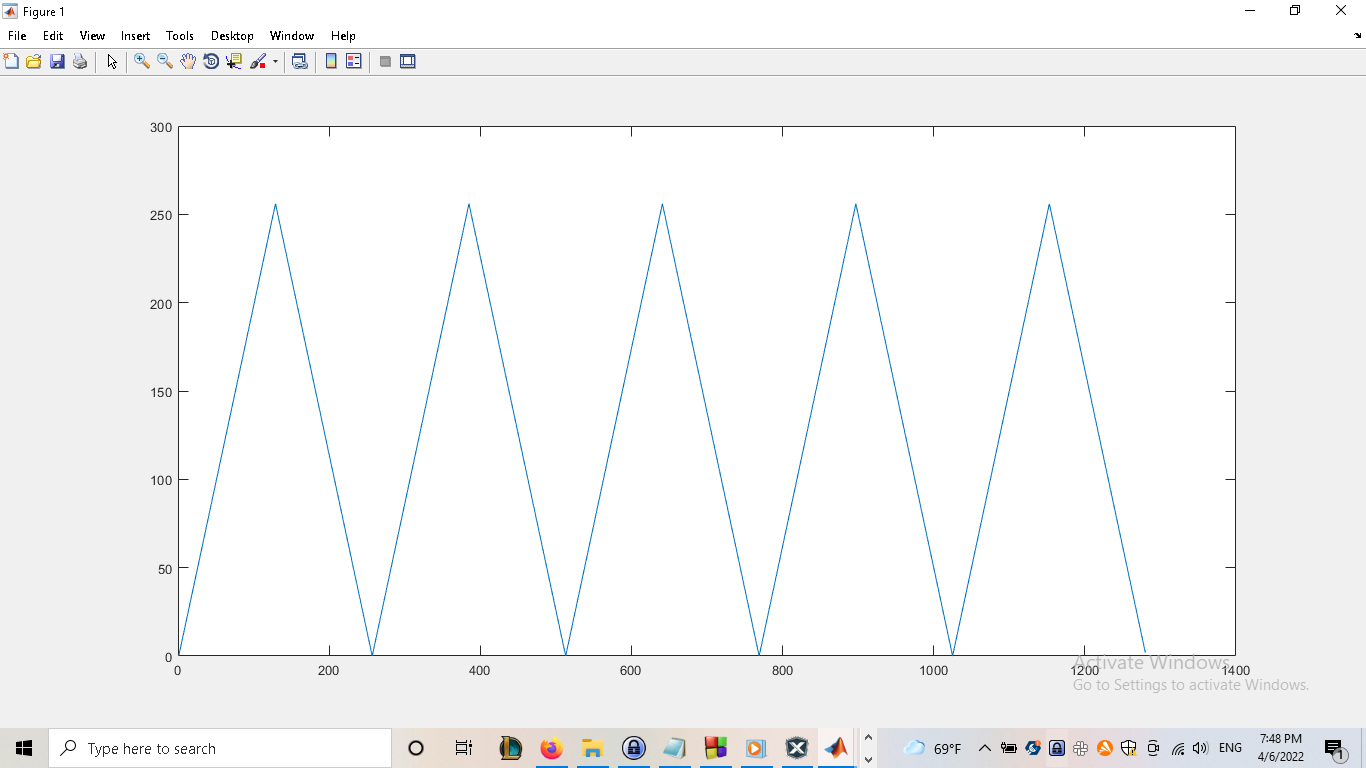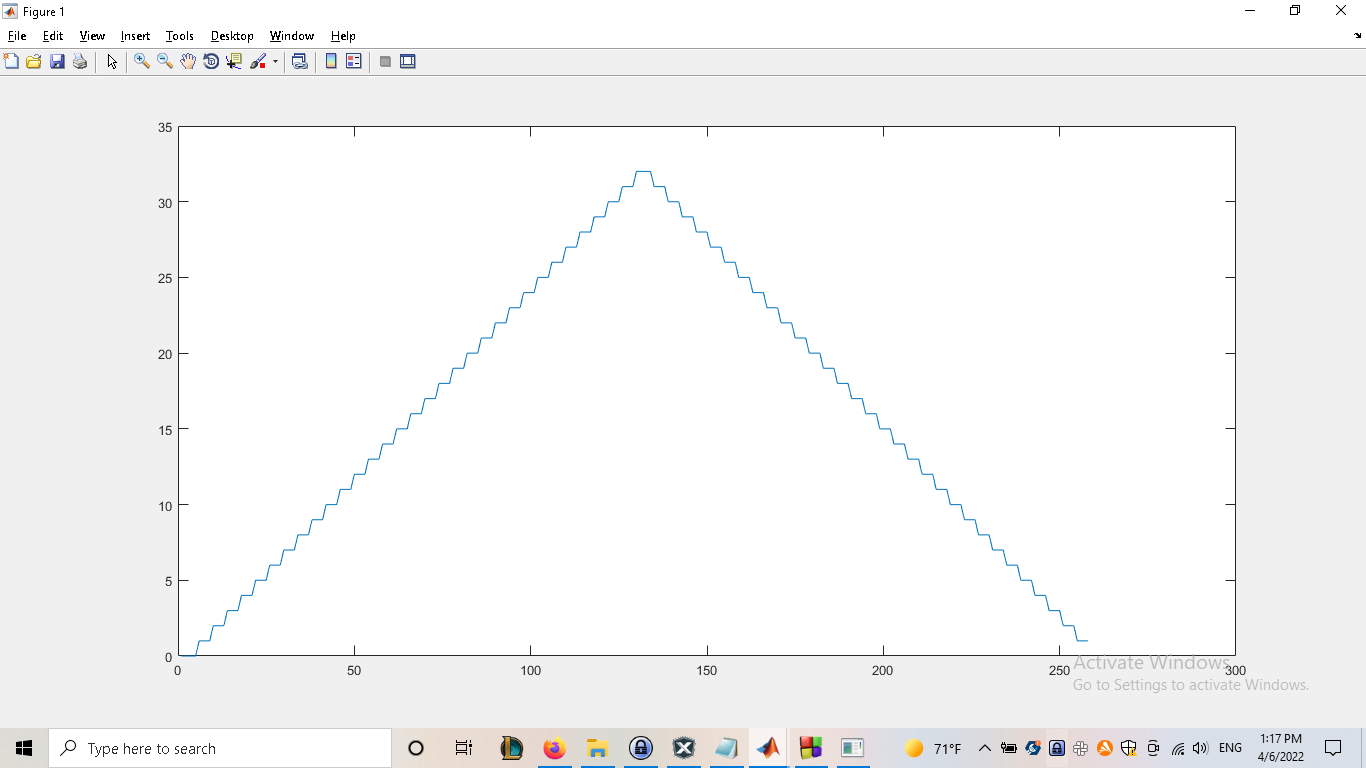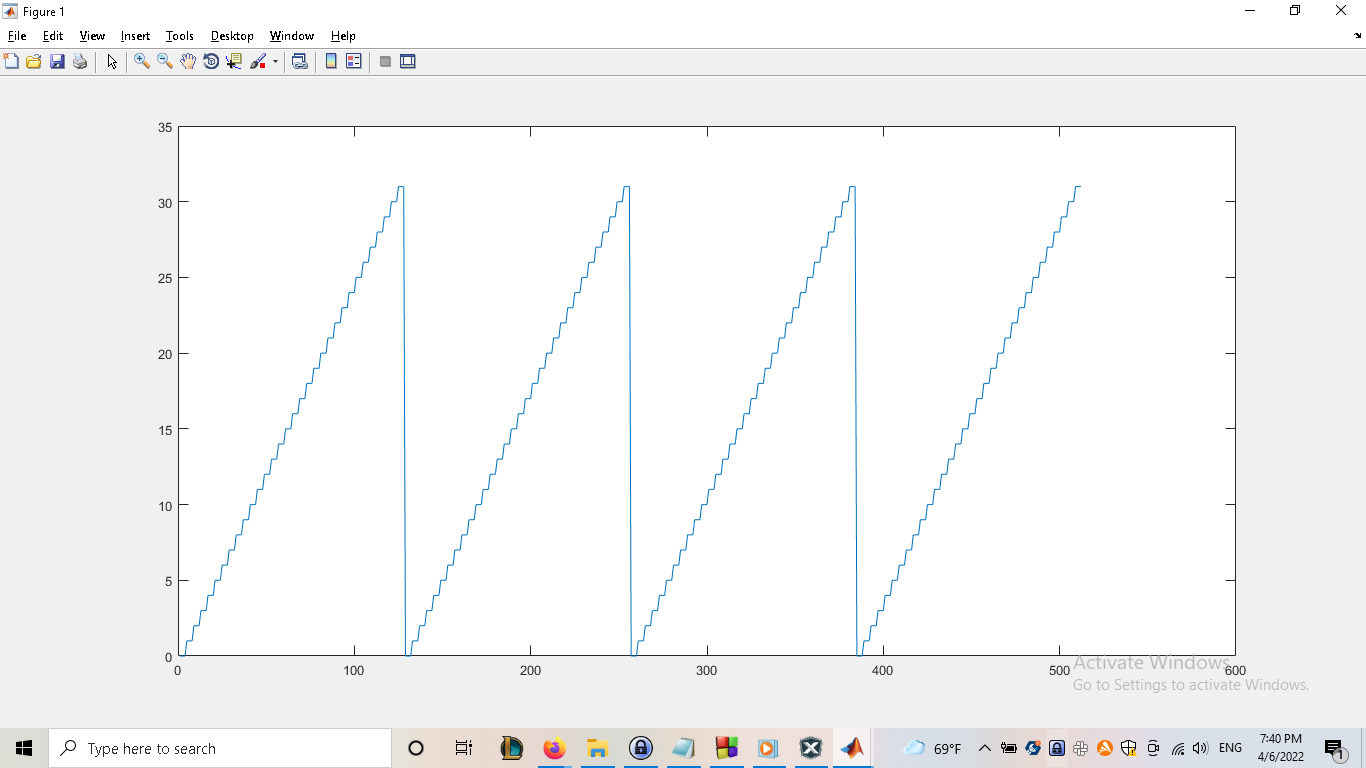PIC has been manufacturing microcontrollers with built-in DACs for quite some time now, and I thought that an article on generating arbitrary waveforms using nothing more than an MCU, PIC18F45k50 in this particular case, would be useful to the newbies.

Image 1 - 8-bit Triangle Wave
Basic, and keep in mind unoptimized, library would consist of only a few simple functions. Function "vtob" would be used for converting voltages from the human-readable form ex. 2.5 to its "binary" representation that could be pushed to a device's register - VREFCON2 register for PIC18F45k50.
Function "sin_map" would generate an array containing values needed for producing a continuous sine wave, and the "print_map" function would print the values of an already generated map for use-cases requiring lower RAM footprint ie. storing the map as a constant in the program memory.
// Function Definitions
int dac_vtob(float);
void dac_sin_map(int*, int, float, float);
void dac_print_map(int*, int);The library should be easily customizable to accommodate a variety of different devices. The following block contains definitions for reference voltage, DAC resolution, and size of the signal map buffer.
// Library Configuration
#define DAC_PI_N -3.14
#define DAC_PI_P 3.14
#define DAC_REF 5
#define DAC_RES 5
#define DAC_BUFFER 32Basic conversion function as described in one of the previous paragraphs.
/**
* @param v
* Human-readable foltage ex. 2.5
* @return int
* Binary-representation ex. 16 for a 5-bit DAC using a 5V reference
*/
int dac_vtob(float v) {
return (int)((v / DAC_REF) * pow(2, DAC_RES));
}When dealing with low-resolution DACs, you can get away with using a small buffer ex. 16-byte buffer when dealing with a 5-bit DAC.
/**
* @param *buff
* Pointer to a buffer in which the map will be stored - memory must be pre-allocated
* @param len
* Size of the buffer ex. 128
* @param dc_off
* DC offset of the signal ex. 2.5
* @param ac_vpp
* Peak-to-peak voltage of the signal ex. 1.0
* @return void
*/
void dac_sin_map(int *buff, int len, float dc_off, float ac_vpp) {
int i = 0;
float j = DAC_PI_N;
float incr = DAC_PI_P / (len / 2);
dc_off = dac_vtob(dc_off);
ac_vpp = dac_vtob(ac_vpp / 2);
do {
buff[i] = (int)(ac_vpp * sin(j) + dc_off);
if (buff[i] < 0) {
buff[i] = 0;
}
}
while (i++ < len && (j += incr) < DAC_PI_P);
}If RAM is at a premium, you can compile the library with GCC and pre-generate signal maps to store them as constants in the program memory of your device.
/**
* @param *buff
* Pointer to a buffer in which the map is stored
* @param len
* Size of the buffer ex. 128
* @return void
*/
void dac_print_map(int *buff, int len) {
for (int i = 0; i < DAC_BUFFER; i++) {
if (i == 0) {
printf("x = [ %d", buff[i]);
}
else {
printf(", %d", buff[i]);
}
}
printf(" ];");
}The frequency of the generated signal is ~600Hz in the snippet below, and can be easily adjusted by tweaking the value of the XC's "__delay" function, or by altering the buffer size.
|
|
| Output Frequency |
// Basic Implementation
int buffer[DAC_BUFFER];
dac_sin_map(&buffer[0], DAC_BUFFER, 2.5, 4);
while (true) {
VREFCON2 = buffer[i++];
if (i == DAC_BUFFER) {
i = 0;
}
__delay_us(100);
}Here are some previews of the signals that could be generated using a 5-bit DACs on 8-bit microcontrollers.


